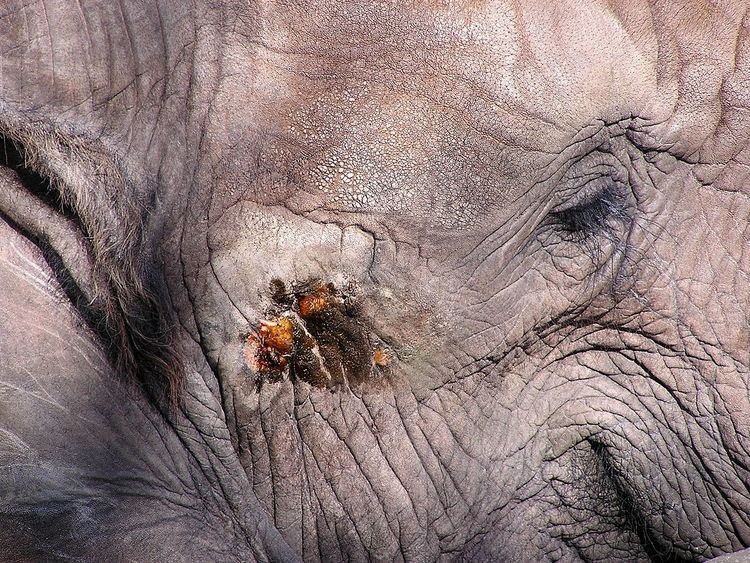 | ||
Temporins are a family of peptides isolated originally from the skin secretion of the European red frog, Rana temporaria. Peptides belonging to the temporin family have been isolated also from closely related North American frogs.
In elephants, temporin is secreted by temporal glands during the period of musth. It contains proteins, lipids (notably cholesterol), phenols, cresols and sesquiterpenes (notably farnesol and its derivatives).
In old Sanskrit texts, it is referred to as rut fluid (dāna, or mada) and is considered to be a symbol of potency and vigour:
Wild elephants roam the forest and water the trees with their streaming rut fluid. Is it therefore any wonder that the trees in the forest have grown so very tall?However, even from the point of view of ancient Indian elephant science (gajaśāstra), Temporin (mada) is not a direct symptom of rut.
References
Temporin Wikipedia(Text) CC BY-SA
